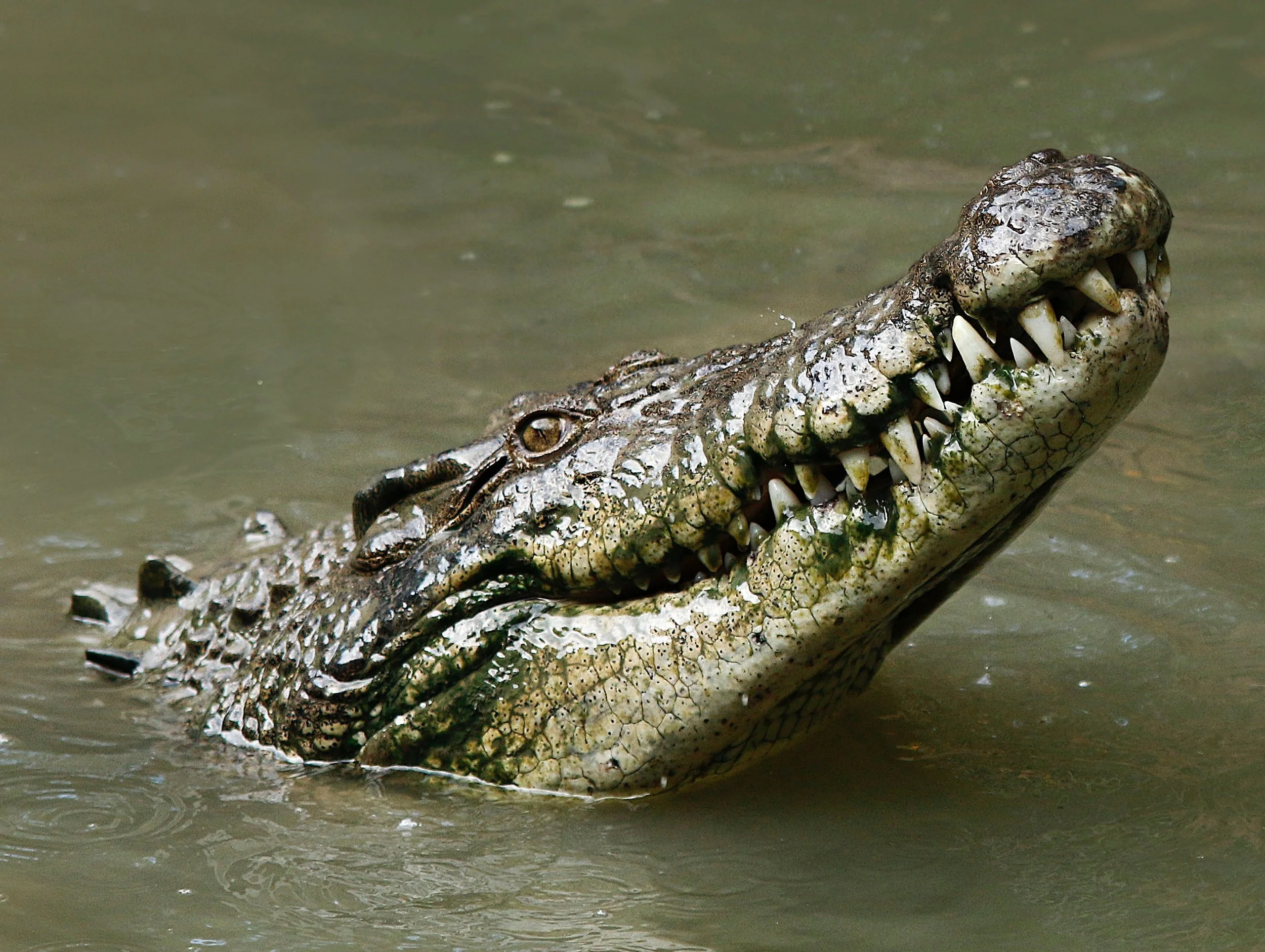American Crocodile
Scientific Name: Crocodylus acutus Status :Critically Endangered Range: The Americas Clutch: 20-60 eggs
Description
The American crocodile is greenish – gray in colour with a white-yellow underbelly. It has a muscular body with four short feet that has five toes on the front feet and four toes on the back feet as well as a narrow triangular shaped snout. The fourth tooth of the lower jaw can be seen when the snout of the crocodile is closed.
Male crocodiles are larger than females reaching up to 14 – 20 feet in length whilst females can reach up to 8-12 feet.
Crocodiles depend on external sources of heat to regulate their body temperature by basking in the sun or by moving to a more ideal location. They often bask in the sun with their mouths open.
Range & Habitat
The American Crocodile can be found on the Southern coasts of North America and the coast of Central America, South America and islands of the Caribbean. There, crocodiles find their habitat in wetlands, mangroves and estuaries.
Diet
The American Crocodile is a carnivore. Young crocodiles eat small fish, snails, crustaceans and insects whilst adults eat mostly fish, crabs, turtles, snakes and small mammals.
Reproduction
The American Crocodile makes its nests primarily in holes. Nests are made on elevated sites with good drainage as to prevent flooding for a long period.
Females typically lay 20-60 eggs per clutch. The eggs are then incubated for about 85 days until they hatch. The hatchlings then make their way to water and then the wild after a period of time.
Threats
Crocodile populations are threatened mainly by overexploitation and illegal hunting.
In the 1930s to 1960s crocodiles were hunted for their skin leading to a severe decline in the species. Other threats to crocodiles are habitat degradation due to development, destruction of nesting grounds and opportunistic killings. Predation of hatchlings and young crocodiles is also a factor.
Conservation Status
The American Crocodile is considered Vulnerable according to the IUCN Red List.
